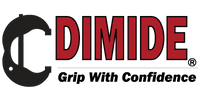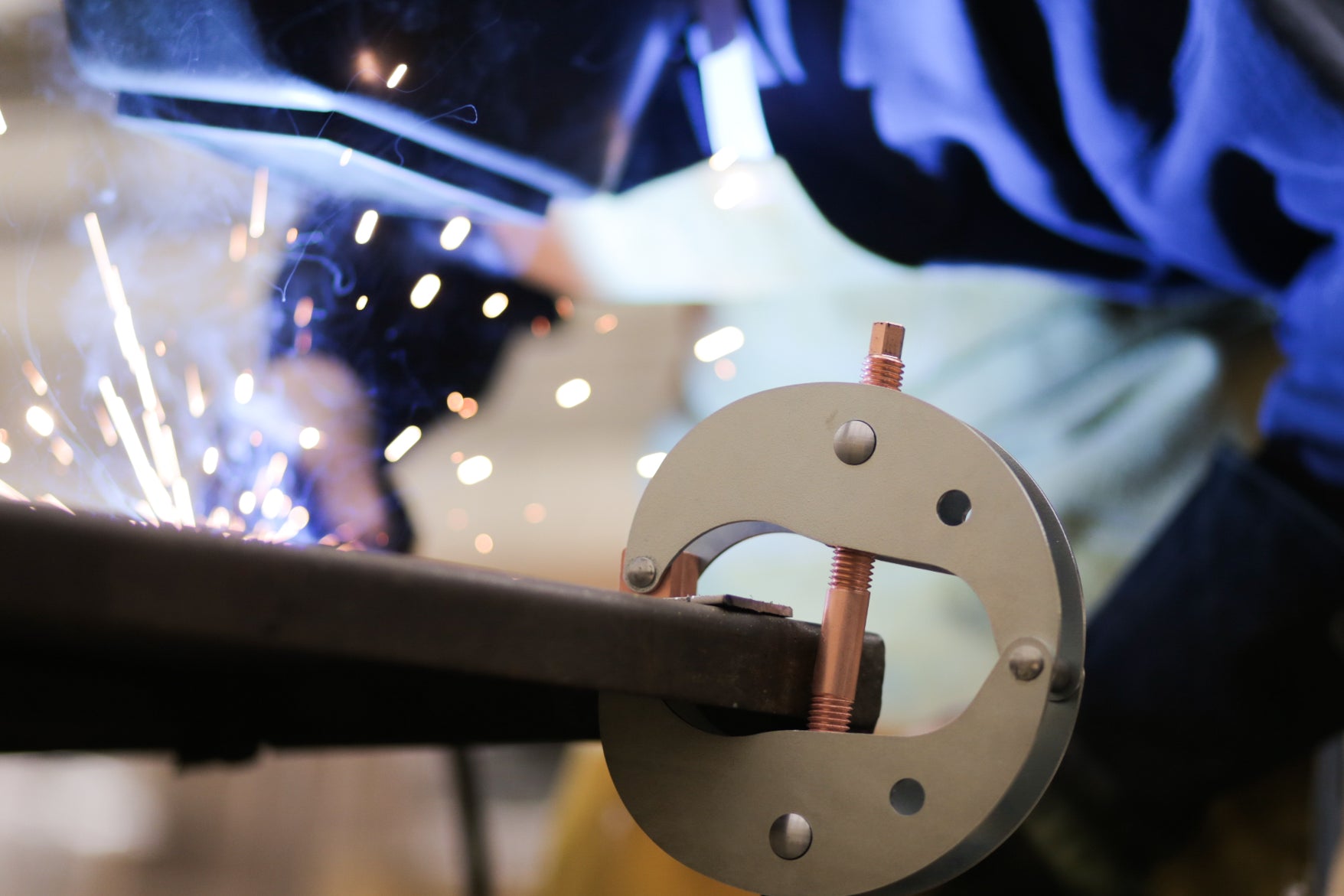Shop Safety and Occupational Health
While working with tools there is nothing that is more important than safety. In manufacturing and construction, disregarding safety can quickly lead to more than just wasted time. With the potential for life-changing injuries or death, there is never a good reason to skip out on following proper safety protocols.
Prior to starting an unfamiliar project, it is always important to review all relevant Occupational Safety and Health Administration (OSHA), Environmental Protection Agency (EPA) standards and regulations. These standards and regulations can be found on www.osha.gov and www.epa.gov. Also be sure to review any and all manufacturers instructions, specifications, and warnings before using an unfamiliar tool to ensure safe handling. Safety instructions for the Dimide Clamp can be found here.
You should always remain aware and practice any safety rules of your shop or work environment at all times. These rules should be posted around the shop or work area to be easily accessible to all workers. If there are any safety rules and personal protective equipment (PPE) that are specific to certain tools, such as wearing a face shield with a grinding wheel, then these rules and PPE should be placed and remain easily accessible nearby the tool. All workers should also be advised in proper safety procedure prior to working with any tool.
If you have not yet created a list of rules for your work area, it is time to sit down and review OSHA and EPA regulations as well as recommended safety protocols developed by other companies to create a list of rules and required PPE that make sense for your work environment.
The following are examples of common shop rules:
- Report every injury to your supervisor immediately, no matter how slight or insignificant the injury may seem.
- If you are unsure about the safe operation or process of a job, request assistance from your supervisor.
- Report any unsafe conditions to your supervisor immediately. Rely on your judgment and knowledge of safety to guide you.
- Report any worker who appears to be unsafe to work to your supervisor immediately. This can include being overly tired, distracted, or several other reasons.
- Personal protective equipment (PPE) required in each shop must be worn as specified. Safety-toe shoes, bump hats, safety glasses with side-shields, goggles, face shields, respirators and other forms of protective equipment or clothing are for employee protection. Steel-toe safety shoes should be the high-top style.
- Gloves should not be worn when operating drills, lathes or other types of machinery that contain rotating spindles or cutting tools.
- Wear clothes that are suitable for work. Long-sleeve shirts must be worn when burning, welding, grinding or performing other types of work where sparks or hot metal are present or where the work involves the use of acids or similar substances. Do not wear synthetic fabrics.
- Neckties, rings, watches, and loose or ragged clothing create a hazard when operating drills, lathes or other rotating and moving equipment or machinery.
- Employees with long hair must tie their hair back or tuck it under their bump cap so it won't be caught in any rotating machinery or part.
- Observe all caution and danger signs. Be alert and pay attention to horns, alarms or verbal commands. Be sure to follow the requirements on Material Safety Data Sheets (MSDSs).
- Keep your work area clean and orderly; neatly arrange equipment and material. Do not allow parts, metal, wires, scrap or other material to accumulate on the shop floors or in work areas. Place drink cups, cans, bottles, paper, lunch scraps, etc., in the proper containers. (Some work areas decide to have a lunch/break area outside of the shop and ban food and drink from the shop floor.)
- Horseplay is forbidden. Do not disturb or interfere with other technicians when they are performing their job.
- Be certain all safety guards are in place before operating any machine or equipment. Guards must be replaced as soon as repairs or service on a machine has been completed and before the machine is put into operation.
- Verify the safety of all personnel before energizing or operating any equipment.
- Never oil, remove guards or attempt to repair machinery while it is in motion. Do not climb on machinery while oiling or greasing. Repairs of machinery must only be made by authorized personnel or manufacturer's representatives.
- Do not use electrical equipment while standing on damp or wet surfaces or when your hands are wet.
- Observe "No Smoking" areas. Never smoke near compressed oxygen and gas cylinders, paint operations, flammable storage rooms, near gasoline or fuel stations, battery recharging stations or at any locations that contain a combustible or explosive atmosphere or condition.
- Flammable liquids such as gasoline, solvents, and thinners, must be stored in approved safety cans with flame arresters.
- Clamp or secure equipment or material to prevent it from shifting or rotating when drilling, grinding, operating a lathe, etc.
- Always follow manufacturer guidelines when operating a tool.
- When lifting an object, lift with your legs and not your back. Keep your back straight.
The above is only an example of some shop rules to consider for your workplace. It is up to supervisors at your shop or job site to determine the rules that best fit your work environment.
While accidental injuries are the largest concern while working in manufacturing or construction, it is also important to pay attention to repetitive stress injuries. These can occur from performing repetitive tasks with improper form. To ensure you're using proper form, you may consider hiring an ergonomics inspector to monitor work and determine actions to best reduce the risk of repetitive stress injuries. Common mistakes in form include lifting with your back instead of legs, not maintain neutral wrist alignment, leaning over in a chair, and leaning over your work while standing.
DIMIDE prides itself in reducing the risk of repetitive stress wrist injuries due to tightening clamps by allowing an impact wrench to apply torque to the clamp while keeping your wrist in a neutral position.
Visit OSHA's resource on ergonomics.


